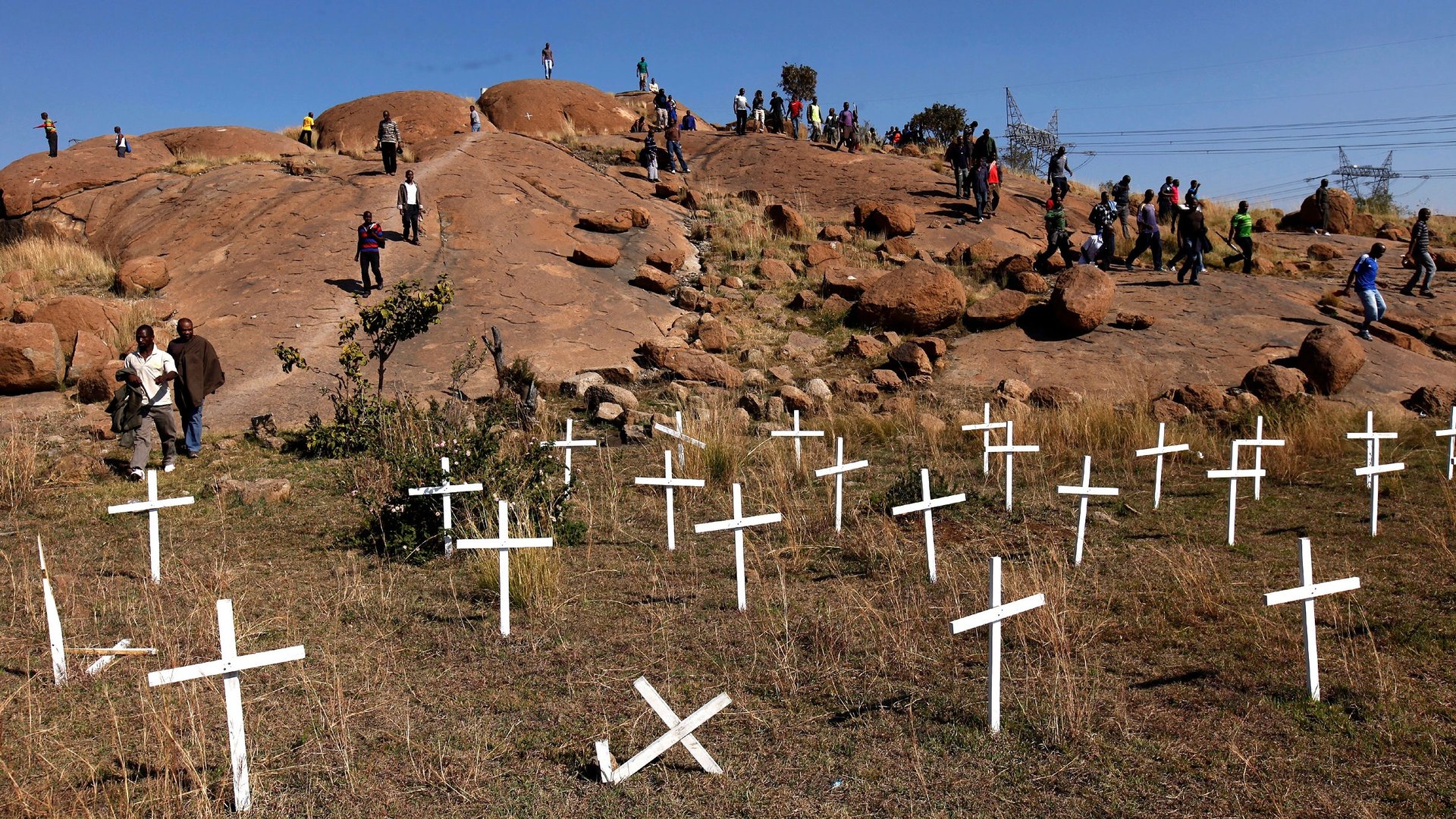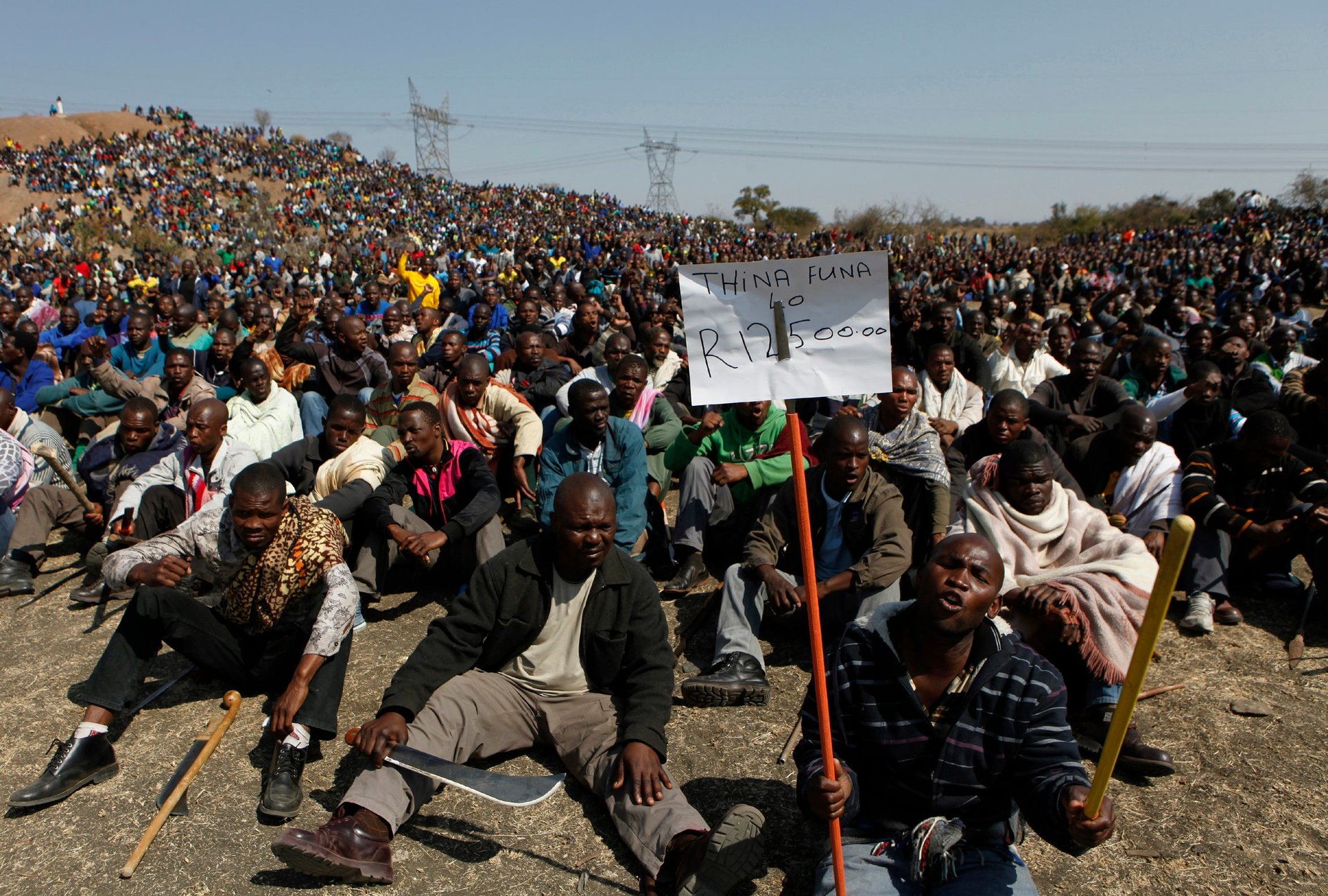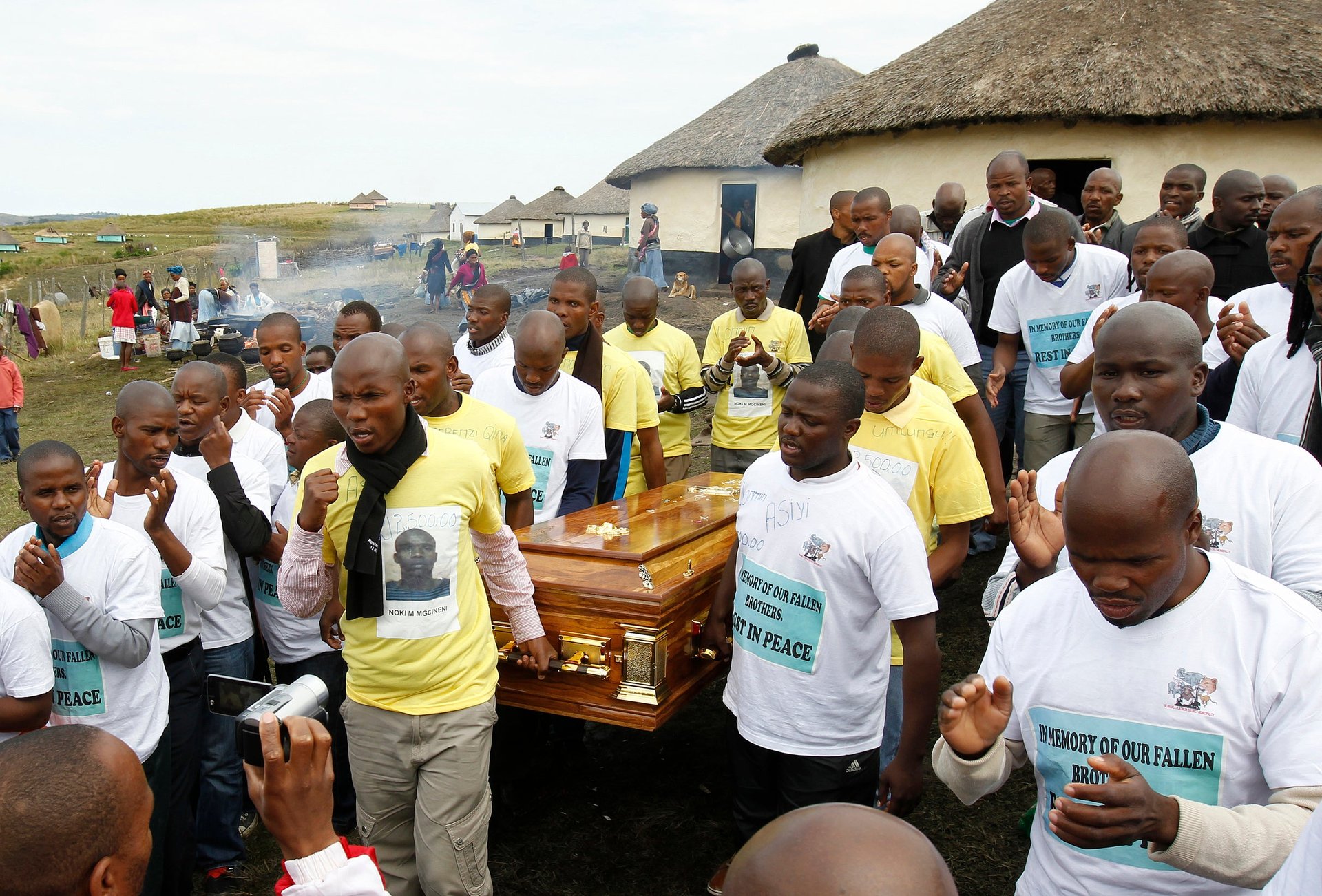Marikana is the massacre South Africa doesn’t know how to mourn
South Africa has no trouble remembering its painful past, and yet at the fifth anniversary of the Marikana shooting the country still has no closure—or monument—to one of the most seminal events in recent history.


South Africa has no trouble remembering its painful past, and yet at the fifth anniversary of the Marikana shooting the country still has no closure—or monument—to one of the most seminal events in recent history.
In the last half century, South Africa’s historical landscape has been the site of displacement, slavery, colonialism, concentration camps and apartheid. It is admirable how the country has forced itself to face its public pain and use it as the foundation of a new identity, collectively mourning through monuments and memorials. South Africa has pointed to its ability to reckon with its past as a sign of the country’s efforts to reconcile. The Marikana massacre, however, has tested this resolve.
Five years ago, a tense labor standoff resulted in the first mass shooting since apartheid. For days, thousands of miners demanding better wages in the platinum sector had gathered on a rocky hill, known locally as a koppie. On August 16, 2012, jittery police opened fire on a group of striking mineworkers, killing 34 at the foot of a rocky hill, known locally as a koppie.

Today, the koppie juts out of an otherwise bland landscape, much smaller than it seemed when it was occupied by hundreds of disenfranchised miners. Children slide down the steep, smooth edge and young people sunbathe. For a while, simple crosses marked where the miners fell, but have since disappeared. The opposition party, the Economic Freedom Fighters, tried to erect similar crosses as a monument in other parts of the country, but they were removed within hours.
The miners who were killed and injured were a mass of impoverished men who worked long hours underground, and lived in hostels and informal settlements at the foot of mine dumps in South Africa’s platinum belt. They’d rejected the union linked to the ruling African National Congress and the union that sprang up in its place simply didn’t have the national clout. They remained voiceless except for the struggle songs led by an impromptu leader, Mgcineni Noki, who became known as the Man in the Green Blanket.

Memorializing their stories would force South Africa to face its own post-apartheid failures: low wages, poor working conditions and a lack of basic housing. Any monument would highlight how, economically, little has changed for many South Africans.
On the fifth anniversary on Aug 16, 2017, the koppie was once again occupied by thousands of miners, this time attending a memorial service headlines by opposition politicians. A day earlier, on Aug. 15, Lonmin unveiled plans to build a memorial park, inspired by the green blanket worn by Noki, and its progress on long promised houses.
The rhetoric of the day was marked by how little has changed for the community around the mine, which was one of the rallying cries of the striking miners five years ago. In the absence of a home, few would focus on a museum. The lack of a monument, however, has more to do with how politically contentious the issue has become.
It’s been a blight on the political career of deputy president Cyril Ramaphosa, who was a non-executive member of the Lonmin board and used his political influence to end the strike (although, it’s unlikely that he could have foreseen the effect of a few lines in an email). Ramaphosa has participated in a televised commission of inquiry and apologized after being heckled in parliament, but he may not set foot at the koppie.
Ramaphosa built his political career as a trade unionist, before becoming a businessman and one of South Africa’s wealthiest men. Tipped to be the next president, his story of post-apartheid success is starkly at odds with that of the slain miners. These two stories would not sit comfortably next to each other on a monument, but as South Africa already knows, healing and remembering are rarely easy.